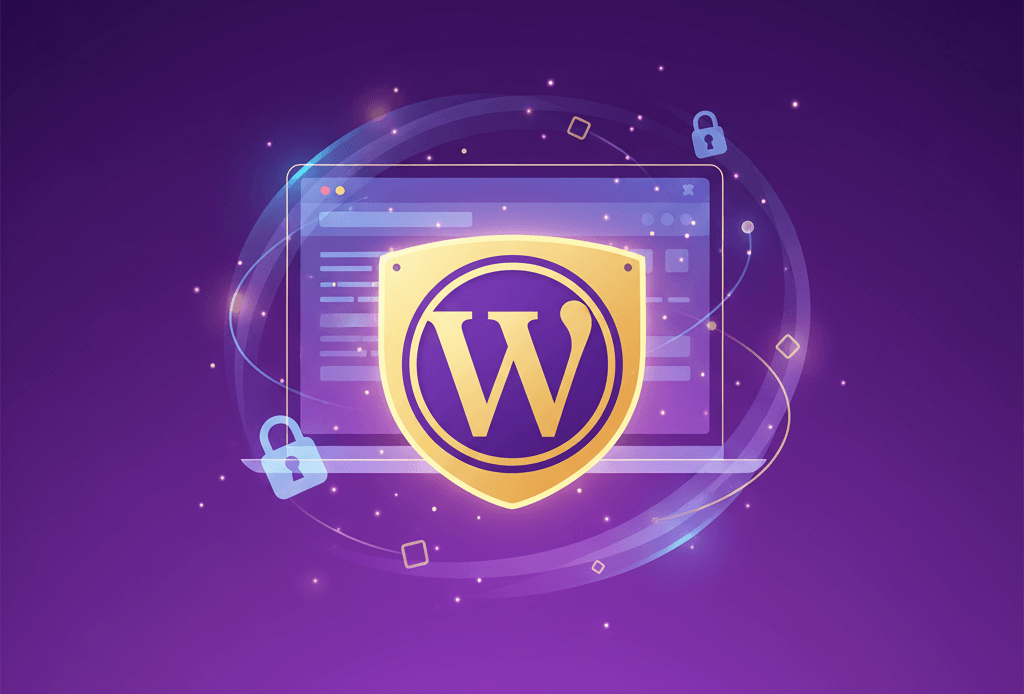
WordPress powers over 44% of websites worldwide, making it a prime target for cyberattacks. If you’re running a WordPress website, security should be at the top of your priority list. In this guide, we’ll walk you through actionable steps to secure your WordPress site and protect it from hackers, malware, and other security threats.
Is WordPress Secure?
Yes, WordPress is secure if properly maintained. WordPress developers regularly release security patches and updates. However, since it’s an open-source platform, hackers frequently look for vulnerabilities. This means you need to take extra steps to harden your website security and prevent attacks.
Top WordPress Security Threats
Before securing your site, it’s essential to understand the common threats:
- Brute Force Attacks – Hackers attempt to guess your login credentials.
- Malware & Backdoors – Malicious code can be injected into themes or plugins.
- DDoS Attacks – Overloads your site with traffic, causing downtime.
- SQL Injections – Hackers exploit database vulnerabilities to gain access.
- Cross-Site Scripting (XSS) – Attackers inject scripts to steal data.
Now, let’s go through the best ways to secure your WordPress website.
1. Choose a Secure WordPress Hosting Provider
Your hosting provider plays a crucial role in security. Choose a managed WordPress host that provides:
✅ Free SSL certificates for encryption
✅ Web Application Firewall (WAF) to block malicious traffic
✅ DDoS protection to prevent attacks
✅ Daily backups for recovery
✅ Malware scanning to detect threats
Top hosting providers for security include SiteGround, Cloudways, and Kinsta.
2. Secure Your WordPress Login
The WordPress login page is a common target for hackers. Secure it with these steps:
Change the Default Login URL
Hackers often target /wp-admin and /wp-login.php. Use a plugin like WPS Hide Login to customise your login URL.
Enable Two-Factor Authentication (2FA)
Add an extra layer of protection with WP 2FA or Google Authenticator.
Limit Login Attempts
Prevent brute force attacks by limiting failed login attempts with Limit Login Attempts Reloaded.
Whitelist IP Addresses
Restrict access to specific IP addresses using your hosting firewall.
3. Install Essential Security Plugins
Using a WordPress security plugin adds an extra layer of protection. The best ones include:
- Wordfence – Includes a firewall, malware scanner, and login security.
- Sucuri Security – Provides a firewall, malware removal, and DDoS protection.
- SolidWP (formerly iThemes Security) – Blocks brute force attacks and hardens security settings.
- WP Activity Log – Monitors changes to detect suspicious activity.
4. Keep WordPress, Themes, and Plugins Updated
Outdated software is a major security risk. Hackers often exploit vulnerabilities in old versions of WordPress, plugins, and themes.
✅ Enable automatic updates for minor WordPress updates.
✅ Regularly check for plugin and theme updates in the dashboard.
✅ Remove unused plugins and themes to reduce security risks.
5. Install an SSL Certificate
SSL (Secure Socket Layer) encrypts data between your website and users, protecting sensitive information. Many hosts offer free SSL certificates via Let’s Encrypt.
🔒 Websites with SSL show HTTPS in the URL.
🚨 Without SSL, Google may flag your site as “Not Secure.”
6. Harden WordPress Security
For advanced security, implement these techniques:
Secure wp-config.php
The wp-config.php file contains sensitive information like database credentials. Move it outside the root directory and restrict access using .htaccess:
<Files wp-config.php>
order allow,deny
deny from all
</Files>Change WordPress Salt Keys
Salt keys encrypt passwords and cookies. You can update them using the WordPress Salt Generator.
Adjust File Permissions
Restrict access to important files:
- wp-config.php: Set to 400
- .htaccess: Set to 444
Disable XML-RPC
XML-RPC can be used for brute force attacks. Disable it using this code in .htaccess:
<Files xmlrpc.php>
order allow,deny
deny from all
</Files>Hide Your WordPress Version
Attackers look for outdated WordPress versions. Add this code to hide your version:
remove_action('wp_head', 'wp_generator');7. Regularly Backup Your Website
Backups are your safety net if your site is hacked. Use a plugin like:
- UpdraftPlus – Easy, automated backups with cloud storage.
- BlogVault – Daily offsite backups with one-click restore.
Store backups in a secure location like Google Drive or Dropbox.
8. Monitor Suspicious Activity
Use activity log plugins to track changes and detect unusual behaviour. WP Activity Log provides real-time monitoring.
✅ Look for repeated failed logins
✅ Check for unauthorised user changes
✅ Monitor file modifications
What to Do if Your WordPress Site is Hacked
If your site is compromised:
- Put your site in maintenance mode.
- Scan for malware using Wordfence or Sucuri.
- Restore from the most recent backup.
- Reset all passwords and update security settings.
- Contact your hosting provider for assistance.
Frequently Asked Questions (FAQs)
How do I make my WordPress website secure?
Follow best practices such as using secure hosting, installing security plugins, enabling 2FA, keeping everything updated, and performing regular backups.
What is the best security plugin for WordPress?
Wordfence, Sucuri, and SolidWP are among the top choices for WordPress security.
How can I prevent brute force attacks on my WordPress site?
Use two-factor authentication, limit login attempts, and change the default login URL.
Is WordPress secure for eCommerce websites?
Yes, if properly secured with SSL certificates, strong passwords, and a secure hosting provider like Kinsta or SiteGround.
Does WP Odyssey provide security guidance for WordPress users?
Yes! WP Odyssey helps website owners manage and secure their WordPress sites with expert advice and resources.
Final Thoughts
Securing your WordPress website isn’t just about installing a plugin – it requires consistent maintenance and proactive measures. WP Odyssey helps website owners learn, manage, and secure their WordPress sites with expert guidance. Follow these steps to keep your site safe, fast, and hacker-proof in 2025!
